-
 Bitcoin
Bitcoin $105,575.5012
1.85% -
 Ethereum
Ethereum $2,564.5217
3.74% -
 Tether USDt
Tether USDt $1.0004
-0.01% -
 XRP
XRP $2.1452
2.16% -
 BNB
BNB $652.0550
1.17% -
 Solana
Solana $147.1705
3.26% -
 USDC
USDC $1.0000
0.03% -
 Dogecoin
Dogecoin $0.1779
3.82% -
 TRON
TRON $0.2712
0.96% -
 Cardano
Cardano $0.6379
2.29% -
 Hyperliquid
Hyperliquid $41.7950
8.57% -
 Sui
Sui $3.0390
2.83% -
 Bitcoin Cash
Bitcoin Cash $444.7546
10.90% -
 Chainlink
Chainlink $13.3217
2.93% -
 UNUS SED LEO
UNUS SED LEO $9.0330
1.67% -
 Avalanche
Avalanche $19.2972
3.29% -
 Stellar
Stellar $0.2591
1.53% -
 Toncoin
Toncoin $3.0119
2.75% -
 Shiba Inu
Shiba Inu $0.0...01207
4.79% -
 Hedera
Hedera $0.1584
4.60% -
 Litecoin
Litecoin $86.1815
5.14% -
 Polkadot
Polkadot $3.8108
2.61% -
 Ethena USDe
Ethena USDe $1.0006
0.01% -
 Monero
Monero $309.5977
2.25% -
 Dai
Dai $1.0000
0.01% -
 Bitget Token
Bitget Token $4.5499
1.84% -
 Uniswap
Uniswap $7.5738
9.50% -
 Pepe
Pepe $0.0...01117
5.49% -
 Aave
Aave $289.1514
8.48% -
 Pi
Pi $0.5786
3.79%
Is the morning star pattern really bottoming out? Should the contract leverage be increased?
The morning star pattern, a bullish reversal signal in crypto trading, may be effective but traders should use additional analysis before increasing leverage.
Jun 10, 2025 at 11:07 am

The morning star pattern is a popular bullish reversal pattern in the realm of cryptocurrency trading, often used by traders to identify potential bottoms in the market. In this article, we will explore whether the morning star pattern is truly effective at signaling a bottom and whether it is a good idea to increase contract leverage when this pattern appears.
Understanding the Morning Star Pattern
The morning star pattern is a three-candle formation that typically appears at the end of a downtrend. It consists of a long bearish candle, followed by a small-bodied candle (which can be either bullish or bearish) that gaps down from the first candle, and finally a long bullish candle that gaps up from the second candle. The pattern suggests that the bearish momentum is waning and a bullish reversal may be imminent.
To identify a morning star pattern, traders should look for the following elements:
- A long bearish candle that indicates strong selling pressure.
- A small-bodied candle that gaps down, showing indecision in the market.
- A long bullish candle that gaps up, signaling a potential reversal of the downtrend.
Effectiveness of the Morning Star Pattern in Cryptocurrency Trading
The effectiveness of the morning star pattern in cryptocurrency trading can vary based on several factors, including market conditions, asset volatility, and the timeframe used for analysis. In general, the pattern is considered more reliable when it appears after a prolonged downtrend and is confirmed by other technical indicators such as volume and moving averages.
In cryptocurrency markets, the morning star pattern can be particularly useful due to the high volatility and rapid price movements. However, traders should be cautious and not rely solely on this pattern. It is essential to use additional tools and analysis to confirm the potential reversal.
Case Studies of the Morning Star Pattern in Cryptocurrency
To better understand the effectiveness of the morning star pattern, let's examine a few case studies from the cryptocurrency market.
Bitcoin (BTC) in March 2020: During the early stages of the global economic downturn, Bitcoin experienced a significant drop. A morning star pattern appeared on the daily chart around mid-March, signaling a potential bottom. Following the pattern, Bitcoin began a strong recovery, confirming the effectiveness of the pattern in this instance.
Ethereum (ETH) in May 2021: Ethereum saw a sharp decline in May 2021, followed by a morning star pattern on the 4-hour chart. While the pattern suggested a bottom, the subsequent price action was less clear, with Ethereum experiencing further volatility before a sustained recovery. This case illustrates the importance of using additional analysis to confirm the pattern's reliability.
Increasing Contract Leverage When a Morning Star Pattern Appears
Increasing contract leverage when a morning star pattern appears can be a high-risk strategy. Leverage amplifies both potential gains and losses, making it crucial for traders to assess their risk tolerance and market conditions before deciding to increase leverage.
Key considerations for increasing leverage include:
- Risk management: Traders should have a clear risk management plan in place, including stop-loss orders to limit potential losses.
- Market volatility: Cryptocurrency markets are highly volatile, and increasing leverage in such conditions can lead to significant losses if the market moves against the trader's position.
- Confirmation signals: Before increasing leverage, traders should look for additional confirmation signals such as volume spikes, positive divergence on oscillators, or support from key moving averages.
Steps to Implement Increased Leverage Based on the Morning Star Pattern
If a trader decides to increase leverage based on the morning star pattern, they should follow these steps:
- Identify the pattern: Confirm that a valid morning star pattern has formed on the chosen timeframe.
- Analyze additional indicators: Use other technical indicators to confirm the potential reversal, such as volume, RSI, and moving averages.
- Assess risk tolerance: Determine the appropriate level of leverage based on the trader's risk tolerance and the current market conditions.
- Set stop-loss orders: Place stop-loss orders to limit potential losses if the market moves against the trader's position.
- Enter the trade: Execute the trade with the chosen level of leverage, ensuring that the position size aligns with the risk management plan.
Potential Pitfalls of Relying on the Morning Star Pattern
While the morning star pattern can be a useful tool for identifying potential bottoms, there are several pitfalls that traders should be aware of:
- False signals: The pattern can sometimes produce false signals, leading traders to enter positions prematurely.
- Market manipulation: In the cryptocurrency market, there is a risk of market manipulation, which can create misleading patterns.
- Over-reliance: Traders who rely too heavily on a single pattern without considering other factors may miss important market dynamics.
Frequently Asked Questions
Q: Can the morning star pattern be used on all cryptocurrencies?
A: The morning star pattern can be applied to any cryptocurrency, but its effectiveness may vary depending on the specific asset's volatility and market conditions. It is generally more reliable on major cryptocurrencies like Bitcoin and Ethereum, where there is higher liquidity and more consistent price action.
Q: How does the timeframe affect the reliability of the morning star pattern?
A: The timeframe used for analysis can significantly impact the reliability of the morning star pattern. On shorter timeframes like 1-hour or 4-hour charts, the pattern may be more susceptible to false signals due to increased market noise. Conversely, on longer timeframes like daily or weekly charts, the pattern tends to be more reliable but may also be slower to form.
Q: Are there other bullish reversal patterns that can be used in conjunction with the morning star pattern?
A: Yes, traders can use other bullish reversal patterns in conjunction with the morning star pattern to increase the likelihood of a successful trade. Some common patterns include the hammer, bullish engulfing, and piercing line patterns. Combining multiple patterns and confirming signals can provide a more robust trading strategy.
Q: How can traders differentiate between a true bottom and a temporary bounce when using the morning star pattern?
A: Differentiating between a true bottom and a temporary bounce requires careful analysis of additional indicators and market conditions. Traders should look for strong volume confirmation, positive divergence on momentum indicators like the RSI, and support from key moving averages. Additionally, monitoring the broader market sentiment and news can provide context for the potential reversal.
Disclaimer:info@kdj.com
The information provided is not trading advice. kdj.com does not assume any responsibility for any investments made based on the information provided in this article. Cryptocurrencies are highly volatile and it is highly recommended that you invest with caution after thorough research!
If you believe that the content used on this website infringes your copyright, please contact us immediately (info@kdj.com) and we will delete it promptly.
- Trezor Has Officially Integrated 1inch Fusion Into Its Trezor Suite
- 2025-06-14 10:20:12
- Pi Network's Token (PI) Forms Bullish "Double Bottom" Pattern, Setting the Stage for a Short Squeeze
- 2025-06-14 10:20:12
- Trezor Has Officially Integrated 1inch Fusion
- 2025-06-14 10:15:24
- In a Bifurcated Crypto Market, Both Legacy Projects and Emerging Infrastructures Are Offering Compelling Narratives
- 2025-06-14 10:15:24
- Shiba Inu (SHIB) token burn portal is live on Shibarium
- 2025-06-14 10:14:09
- Solana (SOL) price up 4.3% as open interest nears all-time highs, spot ETF approval odds jump to 91%
- 2025-06-14 10:14:09
Related knowledge
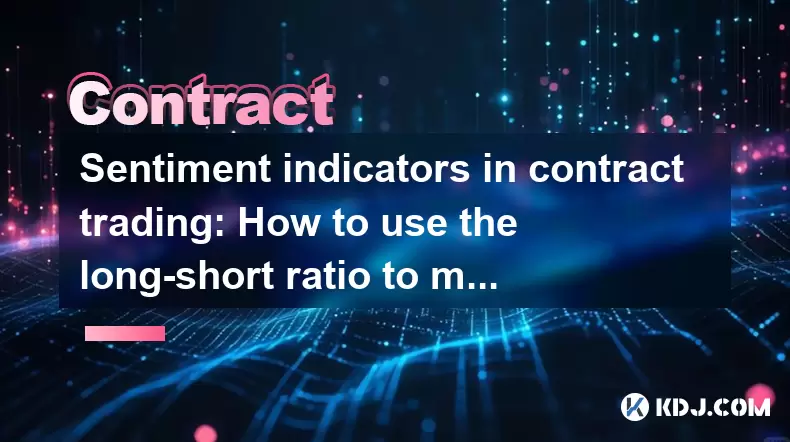
Sentiment indicators in contract trading: How to use the long-short ratio to make decisions?
Jun 14,2025 at 07:00am
What Are Sentiment Indicators in Contract Trading?In the realm of cryptocurrency contract trading, sentiment indicators play a crucial role in gauging market psychology. These tools help traders understand whether the market is dominated by bullish or bearish expectations. Among these indicators, the long-short ratio stands out as one of the most tellin...
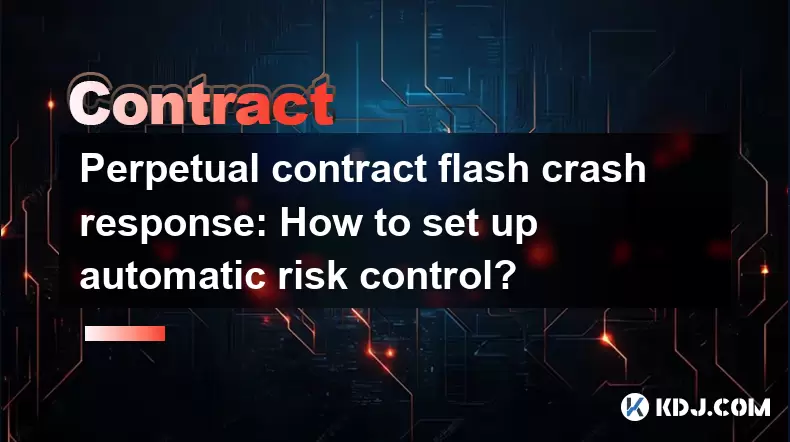
Perpetual contract flash crash response: How to set up automatic risk control?
Jun 13,2025 at 06:28pm
Understanding Perpetual Contract Flash CrashesA flash crash in the context of perpetual contracts refers to a sudden, sharp, and often short-lived drop or spike in price due to high volatility, thin order books, or algorithmic trading activities. These events can lead to massive liquidations across long or short positions on trading platforms. Traders m...

Take-profit strategy in contract trading: Comparison between dynamic take-profit and fixed take-profit
Jun 14,2025 at 07:08am
What Is Take-profit in Contract Trading?In the realm of cryptocurrency contract trading, take-profit refers to a predefined price level at which a trader automatically closes a profitable position. This mechanism is essential for risk management and profit locking. Traders use take-profit orders to ensure they secure gains without being swayed by emotio...
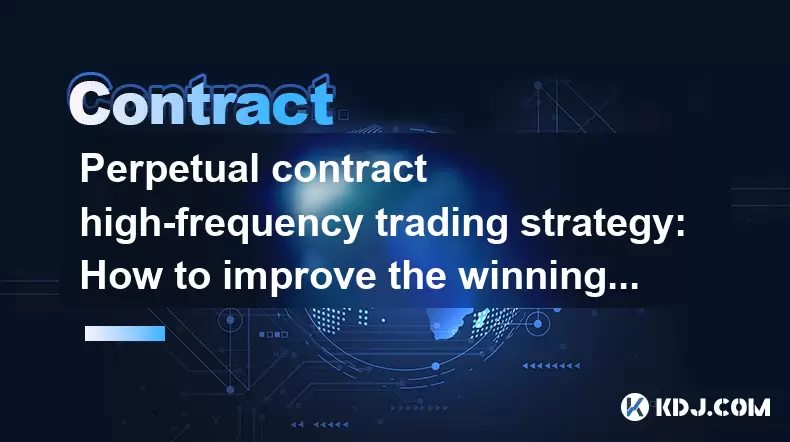
Perpetual contract high-frequency trading strategy: How to improve the winning rate of short-term brushing?
Jun 13,2025 at 04:14pm
Understanding the Basics of Perpetual ContractsPerpetual contracts are derivative financial instruments that allow traders to speculate on the price movement of an asset without owning it. Unlike traditional futures, perpetual contracts have no expiration date, making them ideal for short-term trading strategies like high-frequency trading (HFT). In the...
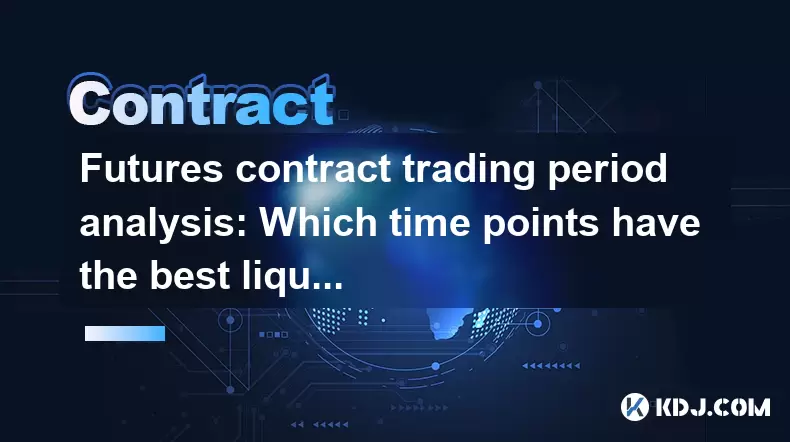
Futures contract trading period analysis: Which time points have the best liquidity?
Jun 14,2025 at 02:35am
Understanding Futures Contract Trading PeriodsIn the world of cryptocurrency trading, futures contract trading has become a dominant form of derivative trading. Unlike spot trading, futures contracts allow traders to speculate on the future price of an asset without owning it. The trading period of a futures contract typically includes several phases: p...
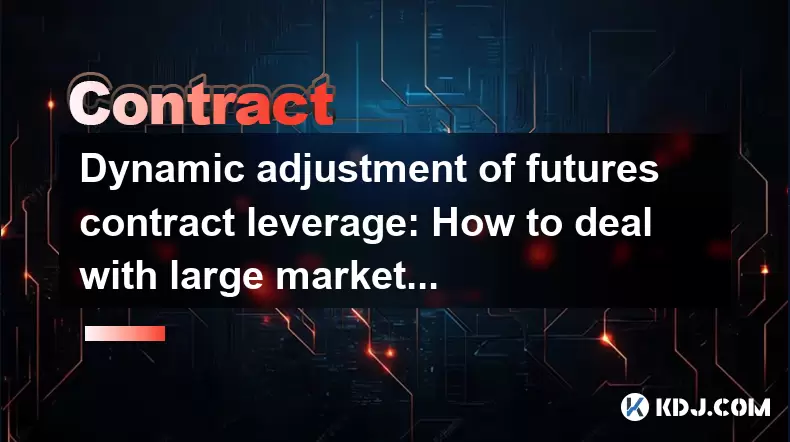
Dynamic adjustment of futures contract leverage: How to deal with large market fluctuations?
Jun 14,2025 at 07:35am
Understanding Futures Contract LeverageIn the world of cryptocurrency trading, futures contracts allow traders to speculate on price movements without owning the underlying asset. A key feature of these contracts is leverage, which enables traders to control larger positions with relatively small capital. However, leverage also amplifies both potential ...

Sentiment indicators in contract trading: How to use the long-short ratio to make decisions?
Jun 14,2025 at 07:00am
What Are Sentiment Indicators in Contract Trading?In the realm of cryptocurrency contract trading, sentiment indicators play a crucial role in gauging market psychology. These tools help traders understand whether the market is dominated by bullish or bearish expectations. Among these indicators, the long-short ratio stands out as one of the most tellin...

Perpetual contract flash crash response: How to set up automatic risk control?
Jun 13,2025 at 06:28pm
Understanding Perpetual Contract Flash CrashesA flash crash in the context of perpetual contracts refers to a sudden, sharp, and often short-lived drop or spike in price due to high volatility, thin order books, or algorithmic trading activities. These events can lead to massive liquidations across long or short positions on trading platforms. Traders m...

Take-profit strategy in contract trading: Comparison between dynamic take-profit and fixed take-profit
Jun 14,2025 at 07:08am
What Is Take-profit in Contract Trading?In the realm of cryptocurrency contract trading, take-profit refers to a predefined price level at which a trader automatically closes a profitable position. This mechanism is essential for risk management and profit locking. Traders use take-profit orders to ensure they secure gains without being swayed by emotio...

Perpetual contract high-frequency trading strategy: How to improve the winning rate of short-term brushing?
Jun 13,2025 at 04:14pm
Understanding the Basics of Perpetual ContractsPerpetual contracts are derivative financial instruments that allow traders to speculate on the price movement of an asset without owning it. Unlike traditional futures, perpetual contracts have no expiration date, making them ideal for short-term trading strategies like high-frequency trading (HFT). In the...

Futures contract trading period analysis: Which time points have the best liquidity?
Jun 14,2025 at 02:35am
Understanding Futures Contract Trading PeriodsIn the world of cryptocurrency trading, futures contract trading has become a dominant form of derivative trading. Unlike spot trading, futures contracts allow traders to speculate on the future price of an asset without owning it. The trading period of a futures contract typically includes several phases: p...

Dynamic adjustment of futures contract leverage: How to deal with large market fluctuations?
Jun 14,2025 at 07:35am
Understanding Futures Contract LeverageIn the world of cryptocurrency trading, futures contracts allow traders to speculate on price movements without owning the underlying asset. A key feature of these contracts is leverage, which enables traders to control larger positions with relatively small capital. However, leverage also amplifies both potential ...
See all articles

























































































